Marco Cagnazzo
WaterMAS: Sharpness-Aware Maximization for Neural Network Watermarking
Sep 05, 2024
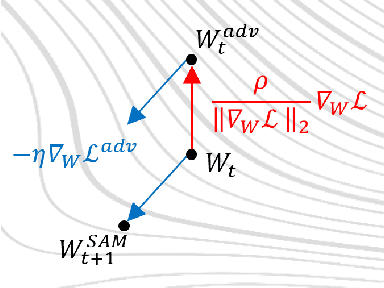


Abstract:Nowadays, deep neural networks are used for solving complex tasks in several critical applications and protecting both their integrity and intellectual property rights (IPR) has become of utmost importance. To this end, we advance WaterMAS, a substitutive, white-box neural network watermarking method that improves the trade-off among robustness, imperceptibility, and computational complexity, while making provisions for increased data payload and security. WasterMAS insertion keeps unchanged the watermarked weights while sharpening their underlying gradient space. The robustness is thus ensured by limiting the attack's strength: even small alterations of the watermarked weights would impact the model's performance. The imperceptibility is ensured by inserting the watermark during the training process. The relationship among the WaterMAS data payload, imperceptibility, and robustness properties is discussed. The secret key is represented by the positions of the weights conveying the watermark, randomly chosen through multiple layers of the model. The security is evaluated by investigating the case in which an attacker would intercept the key. The experimental validations consider 5 models and 2 tasks (VGG16, ResNet18, MobileNetV3, SwinT for CIFAR10 image classification, and DeepLabV3 for Cityscapes image segmentation) as well as 4 types of attacks (Gaussian noise addition, pruning, fine-tuning, and quantization). The code will be released open-source upon acceptance of the article.
Find the Lady: Permutation and Re-Synchronization of Deep Neural Networks
Dec 19, 2023



Abstract:Deep neural networks are characterized by multiple symmetrical, equi-loss solutions that are redundant. Thus, the order of neurons in a layer and feature maps can be given arbitrary permutations, without affecting (or minimally affecting) their output. If we shuffle these neurons, or if we apply to them some perturbations (like fine-tuning) can we put them back in the original order i.e. re-synchronize? Is there a possible corruption threat? Answering these questions is important for applications like neural network white-box watermarking for ownership tracking and integrity verification. We advance a method to re-synchronize the order of permuted neurons. Our method is also effective if neurons are further altered by parameter pruning, quantization, and fine-tuning, showing robustness to integrity attacks. Additionally, we provide theoretical and practical evidence for the usual means to corrupt the integrity of the model, resulting in a solution to counter it. We test our approach on popular computer vision datasets and models, and we illustrate the threat and our countermeasure on a popular white-box watermarking method.
Learn how to Prune Pixels for Multi-view Neural Image-based Synthesis
May 05, 2023Abstract:Image-based rendering techniques stand at the core of an immersive experience for the user, as they generate novel views given a set of multiple input images. Since they have shown good performance in terms of objective and subjective quality, the research community devotes great effort to their improvement. However, the large volume of data necessary to render at the receiver's side hinders applications in limited bandwidth environments or prevents their employment in real-time applications. We present LeHoPP, a method for input pixel pruning, where we examine the importance of each input pixel concerning the rendered view, and we avoid the use of irrelevant pixels. Even without retraining the image-based rendering network, our approach shows a good trade-off between synthesis quality and pixel rate. When tested in the general neural rendering framework, compared to other pruning baselines, LeHoPP gains between $0.9$ dB and $3.6$ dB on average.
HEMP: High-order Entropy Minimization for neural network comPression
Jul 12, 2021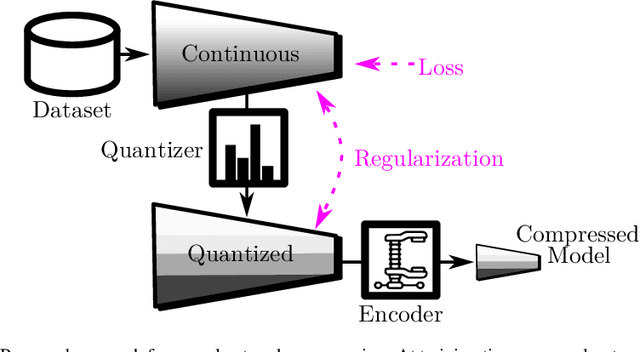
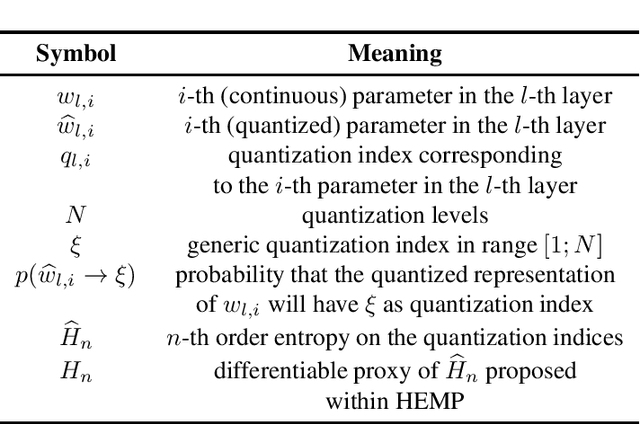
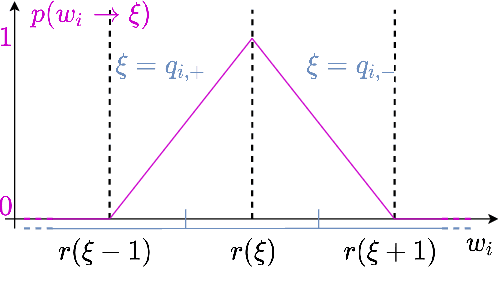
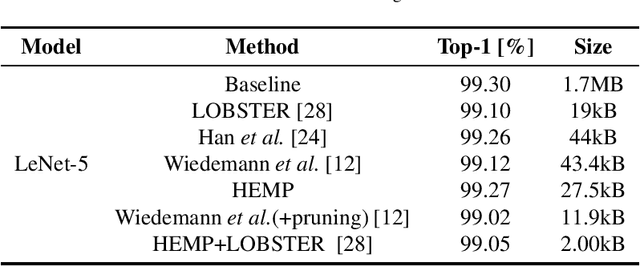
Abstract:We formulate the entropy of a quantized artificial neural network as a differentiable function that can be plugged as a regularization term into the cost function minimized by gradient descent. Our formulation scales efficiently beyond the first order and is agnostic of the quantization scheme. The network can then be trained to minimize the entropy of the quantized parameters, so that they can be optimally compressed via entropy coding. We experiment with our entropy formulation at quantizing and compressing well-known network architectures over multiple datasets. Our approach compares favorably over similar methods, enjoying the benefits of higher order entropy estimate, showing flexibility towards non-uniform quantization (we use Lloyd-max quantization), scalability towards any entropy order to be minimized and efficiency in terms of compression. We show that HEMP is able to work in synergy with other approaches aiming at pruning or quantizing the model itself, delivering significant benefits in terms of storage size compressibility without harming the model's performance.
DR2S : Deep Regression with Region Selection for Camera Quality Evaluation
Sep 21, 2020



Abstract:In this work, we tackle the problem of estimating a camera capability to preserve fine texture details at a given lighting condition. Importantly, our texture preservation measurement should coincide with human perception. Consequently, we formulate our problem as a regression one and we introduce a deep convolutional network to estimate texture quality score. At training time, we use ground-truth quality scores provided by expert human annotators in order to obtain a subjective quality measure. In addition, we propose a region selection method to identify the image regions that are better suited at measuring perceptual quality. Finally, our experimental evaluation shows that our learning-based approach outperforms existing methods and that our region selection algorithm consistently improves the quality estimation.
 Add to Chrome
Add to Chrome Add to Firefox
Add to Firefox Add to Edge
Add to Edge